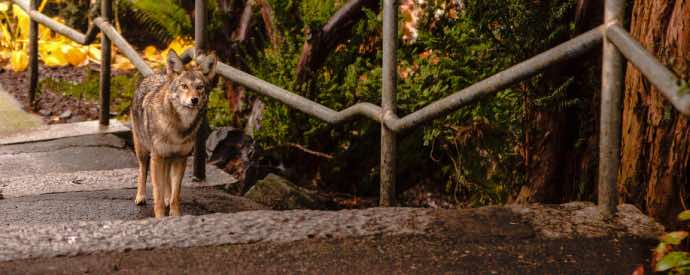 Throughout history, encountering a coyote in areas deemed as “urban” or “suburban” was a rare occurrence; however, as populations increase and construction efforts continue to expand into the natural habitats of these creatures, encounters are becoming more commonplace.
Throughout history, encountering a coyote in areas deemed as “urban” or “suburban” was a rare occurrence; however, as populations increase and construction efforts continue to expand into the natural habitats of these creatures, encounters are becoming more commonplace.
Today, it is common to catch a fleeting glimpse of a coyote as they move from their territory in an effect to locate shelter, food, water, or attempt to reproduce. While mostly a nocturnal creature that is relatively shy around humans and other types of animals – apart from those that they consume – it is not at all unusual to find that the area around your property or even your property is prone to a visit – especially if you live in North and South Carolina.
In this guide, you will be introduced to a few strategies that will help you avoid experiencing problems if you find yourself in the presence of a coyote.
If you encounter a coyote that does not seem to be frightened of you and fails to run off in your presence, it is quite likely that the creature now has a habituation to humans. In most instances, this is a direct result of being fed by people. This could have been direct or indirect.
For example, a person may have given food to the coyote, left food outdoors, or failed to secure garbage left outdoors. As a result, the fed coyote will become dependent upon the feedings and will seek out areas where people frequent, in order to find food.
If faced with a coyote that appears to have a habituation to humans, follow the steps outlined below:
If coyotes are in or near where you live, it is quite likely that you will – eventually – experience a face-to-face encounter. If this happens during the daytime hours, it likely means that the creature is habituated to humans.
While most will simply want access to food, others may view you as food, or prey. If possible, you should try to change your route. Otherwise, take the following steps:
If you live near coyotes, you may encounter one that is aggressive. Typical signs of aggression include growling, barking, snarling, and attempting to attack. While this may be seasonal behavior due to puppy season among the species, it could indicate other issues such as the presence of rabies.
You should contact the local authorities as quickly as possible. You may also contact an animal trapper. Palmetto Wildlife offers coyote removal services in North and South Carolina.
To learn more about getting rid of a coyote or how to avoid conflicts with the creatures, contact Palmetto today at: https://palmettowildlifeextractors.com/contactus/